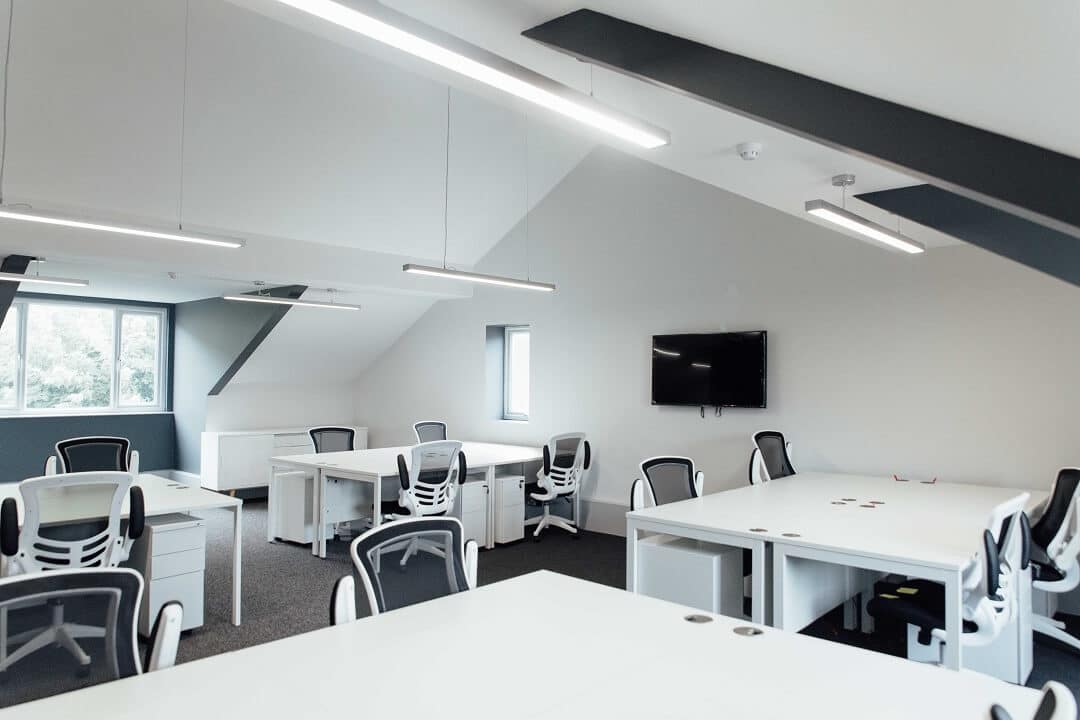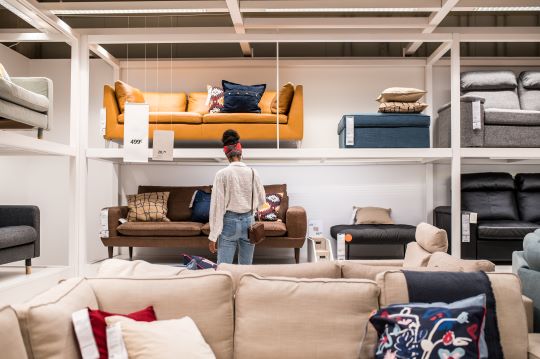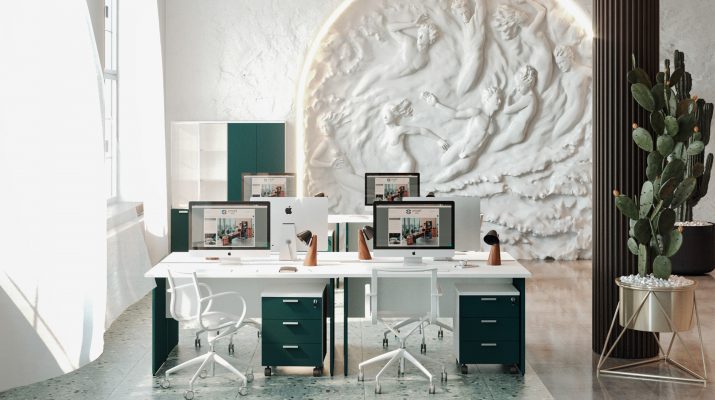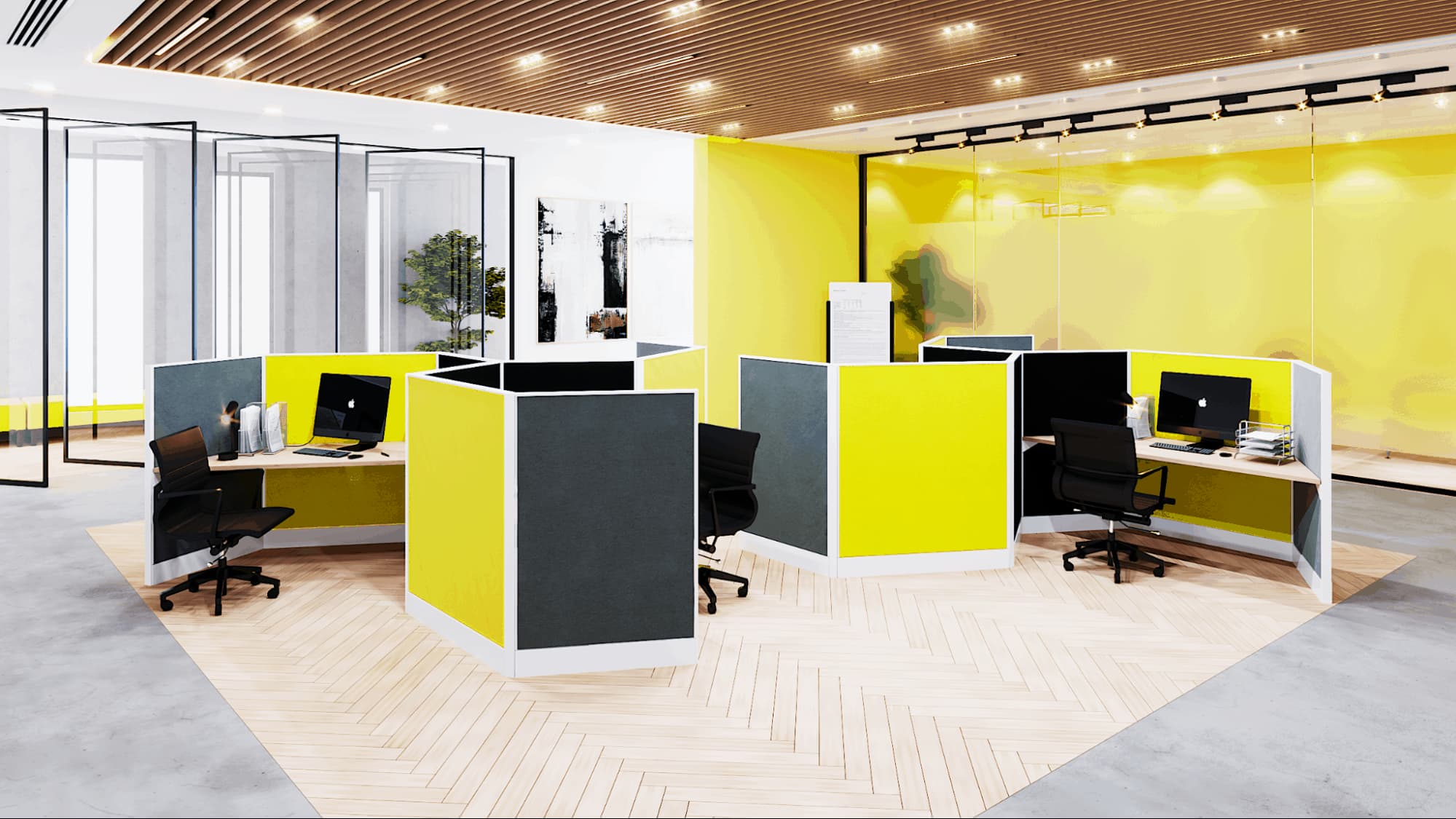Choosing the right office furniture is more than just picking out chairs and desks. It plays a crucial role in creating a productive and comfortable work environment for employees. Well-chosen furniture not only enhances the aesthetics of the office but also contributes to the overall efficiency and well-being of the workforce.
The right office furniture has a direct impact on productivity and comfort levels. Ergonomically designed chairs and desks promote proper posture and reduce the risk of musculoskeletal issues, leading to improved employee health and increased focus. Comfortable furniture can help prevent fatigue and enhance concentration, allowing employees to work efficiently for extended periods.
In this blog, we aim to provide you with game-changing tips for buying office furniture. Whether you are setting up a new office or looking to revamp your existing workspace, making informed decisions about furniture selection is crucial. We will guide you through essential factors to consider, ranging from assessing your needs and space to prioritizing comfort, functionality, and aesthetics. By following these tips, you can create an environment that fosters productivity, promotes employee well-being, and aligns with your company’s goals and values.
Remember, investing in the right office furniture is an investment in the success of your business. So let’s dive into the game-changing tips that will help you make well-informed decisions and transform your office into a functional, comfortable, and inspiring space.
Tip 1: Assess Your Needs and Space

- Evaluating your specific requirements and goals
- Before purchasing office furniture, it’s crucial to assess your specific needs and goals. Take the time to consider the nature of your work and the activities that will be carried out in the office. Are you primarily engaged in desk-based work, collaborative projects, or client meetings? Understanding your requirements will help you choose furniture that aligns with your workflow and enhances productivity.
- Considering the available space and layout of the office
- The size and layout of your office play a significant role in determining the type and quantity of furniture you can accommodate. Measure the available space to determine the dimensions and configuration that will fit comfortably. Consider factors such as walkways, storage requirements, and space for equipment or additional amenities. Optimizing the use of space will contribute to an efficient and functional workspace.
- Determining the number of employees and their roles
- Take into account the number of employees who will be using the office furniture and their respective roles. Different job functions may require specific furniture needs. For example, employees who spend long hours at their desks may benefit from ergonomic chairs and adjustable desks to promote comfort and prevent health issues. Understanding the roles and tasks of your employees will help you tailor the furniture choices to their specific needs.
- Additionally, consider any potential future growth or changes in staffing. Will your workforce expand in the future? Planning for scalability can save you from having to replace furniture too soon.
Tip 2: Prioritize Comfort and Ergonomics

- Understanding the Importance of Ergonomic Office Furniture
- When it comes to office furniture, comfort and ergonomics should be top priorities. Ergonomic furniture is designed to support the natural alignment of the body, promoting good posture and reducing the risk of musculoskeletal issues. Understanding the importance of ergonomic office furniture is essential for creating a comfortable and healthy work environment.
- Investing in ergonomic chairs and desks provides numerous benefits. These furniture pieces are designed with adjustable features that allow users to customize their positions and support their individual needs. By promoting proper posture and reducing strain on the body, ergonomic furniture helps prevent backaches, neck pain, and other discomforts that can arise from extended periods of sitting.
- Choosing Adjustable Chairs and Desks to Support Good Posture
- One key aspect of prioritizing comfort and ergonomics is selecting adjustable chairs and desks. Adjustable chairs allow users to modify seat height, backrest angle, and armrest position to achieve optimal support and comfort. This adaptability ensures that the chair can be customized to the user’s body shape and size, promoting healthy alignment and reducing strain on the spine.
- Similarly, adjustable desks are vital for promoting good posture and preventing discomfort. Sit-stand desks, for instance, enable users to switch between sitting and standing positions throughout the day, reducing the negative effects of prolonged sitting. These desks often feature electric or manual height adjustment mechanisms, allowing users to find the perfect ergonomic position for their work tasks.
- Considering Features like Lumbar Support, Armrests, and Adjustable Heights
- When selecting ergonomic office furniture, it’s crucial to consider specific features that enhance comfort and support. Lumbar support is essential for maintaining the natural curve of the lower back, reducing stress on the spine. Look for chairs with adjustable lumbar support or built-in lumbar pads to provide adequate reinforcement for the lower back.
- Armrests play a significant role in supporting the arms and reducing strain on the shoulders and neck. Adjustable armrests allow users to position their arms comfortably and promote proper alignment. Look for chairs with adjustable armrest height and width to accommodate different body types and work styles.
Tip 3: Focus on Quality and Durability

- Emphasizing the Long-Term Benefits of Investing in High-Quality Furniture
- When it comes to office furniture, prioritizing quality and durability is key. While high-quality furniture may come with a higher price tag upfront, the long-term benefits far outweigh the initial investment. Investing in quality furniture ensures that you have durable and reliable pieces that will withstand the test of time.
- High-quality furniture is built to last, constructed with superior materials and craftsmanship. It can withstand daily wear and tear, frequent use, and the demands of a busy office environment. By opting for quality furniture, you can avoid the hassle and expense of having to replace worn-out or damaged pieces frequently.
- Assessing the Materials, Construction, and Warranty of Furniture Pieces
- When evaluating the quality and durability of office furniture, it’s crucial to assess the materials, construction, and warranty. Look for furniture pieces made from durable materials such as solid wood, metal frames, or high-grade laminates. These materials are more resistant to scratches, dents, and other signs of wear.
- Pay attention to the construction of the furniture. Look for sturdy joints, reinforced corners, and proper assembly techniques. Well-constructed furniture is less likely to develop structural issues or breakages over time.
- Additionally, review the warranty offered by the manufacturer. A robust warranty indicates the confidence the manufacturer has in the quality and durability of their products. Check the terms and conditions of the warranty, including coverage duration and what types of damages are included.
- Researching Reputable Brands and Reading Customer Reviews
- To ensure you are investing in high-quality office furniture, it’s essential to research reputable brands and read customer reviews. Reputable brands have a track record of delivering reliable and durable products. Look for brands that are known for their quality craftsmanship and customer satisfaction.
- Reading customer reviews provides valuable insights into the experiences of others who have purchased the furniture you are considering. Pay attention to feedback on durability, construction, comfort, and overall satisfaction. Genuine customer reviews can help you make an informed decision and avoid potential issues with poor-quality furniture.
Tip 4: Optimize Functionality and Storage

- Assessing the Storage Needs and Options for Your Office
- When it comes to office furniture, optimizing functionality and storage is crucial for maintaining an organized and efficient workspace. Start by assessing the storage needs of your office. Consider the types of items that need to be stored, such as documents, supplies, and personal belongings. Evaluate the quantity and sizes of items to determine the storage capacity required.
- Next, explore the storage options available for your office. This can include filing cabinets, bookcases, shelves, drawers, and storage units. Consider the available space in your office and how the furniture will fit into the layout. Take into account the accessibility and convenience of the storage solutions to ensure easy retrieval of items when needed.
- Choosing Furniture with Built-in Storage Solutions or Customizable Features
- To optimize functionality and storage, select furniture pieces that offer built-in storage solutions or customizable features. Look for desks with built-in drawers or cabinets that can accommodate office supplies and files. Opt for shelving units or bookcases with adjustable shelves to accommodate items of varying sizes.
- Modular furniture is also a great option as it allows for customization based on your specific needs. Modular desks, storage units, and shelving systems can be arranged and rearranged to adapt to changing requirements. This flexibility ensures that your furniture can grow and adjust with your office’s evolving needs.
- Considering the Flexibility and Adaptability of Furniture for Future Needs
- When selecting furniture for optimizing functionality and storage, consider the flexibility and adaptability of the pieces. Think about the future needs of your office and how the furniture can accommodate those changes. Will you need to expand your storage capacity? Will you be reconfiguring your office layout? Choose furniture that can easily be adjusted, expanded, or repositioned to meet future requirements.
- Additionally, multifunctional furniture can help optimize functionality and storage. For example, select desks that have built-in cable management systems or wire trays to keep cables organized and prevent clutter. Choose chairs with storage pockets or compartments to keep essential items within reach.
Tip 5: Consider Aesthetics and Branding

- Aligning Furniture Choices with Your Company’s Brand and Image
- When selecting office furniture, it’s essential to consider how it aligns with your company’s brand and image. Your office space is an extension of your brand and plays a crucial role in creating a cohesive and professional atmosphere. By choosing furniture that reflects your brand values, style, and identity, you can reinforce your brand image and create a consistent visual representation throughout your workspace.
- Start by identifying the key elements of your brand, such as colors, design principles, and overall aesthetic. Consider how these elements can be incorporated into your office furniture choices. For example, if your brand is known for its modern and sleek image, opt for furniture with clean lines, minimalistic designs, and contemporary finishes.
- B. Selecting Furniture that Complements the Overall Office Decor
- Take into account the existing color schemes, materials, and design elements in your office space. Furniture pieces should blend seamlessly with the overall aesthetic, creating a cohesive and balanced look.
- Consider the style of your office decor, whether it’s traditional, contemporary, industrial, or a blend of different styles. Choose furniture that matches or enhances the existing decor elements. For example, if your office features a lot of natural wood finishes, consider furniture pieces that incorporate wood accents to create a sense of continuity.
- C. Balancing Aesthetics with Functionality to Create an Inspiring Work Environment
- It’s crucial to balance them with functionality to create an inspiring work environment. Your office furniture should not only look good but also support the needs and activities of your employees. Consider the practical aspects such as ergonomics, comfort, and usability when making aesthetic choices.
- Look for furniture that offers both style and functionality. For example, ergonomic chairs and adjustable desks can provide the necessary support and comfort while still adhering to your aesthetic preferences.
Tip 6: Set a Realistic Budget

- Determining a Budget Based on Your Requirements and Priorities
- Begin by determining your requirements and priorities. Consider the quantity of furniture needed, the specific pieces required, and any additional features or customization options you may need. These factors will help you establish a baseline for your budget.
- Take into account the long-term value and durability of the furniture when setting your budget. Investing in quality furniture that will withstand daily use and last longer can be a cost-saving strategy in the long run.
- Researching Pricing Options and Comparing Different Suppliers
- To make the most of your budget, conduct thorough research on pricing options and compare different suppliers. Look for reputable furniture suppliers or manufacturers that offer competitive prices without compromising on quality. Request quotes and compare prices for similar furniture pieces to get an idea of the market value.
- Identifying Potential Areas to Save Costs without Compromising Quality
- Explore options such as purchasing pre-owned or refurbished furniture, which can offer significant savings while still providing functional and visually appealing pieces.
Tip 7: Test and Evaluate Before Buying

- Importance of Physically Trying Out Furniture Before Making a Purchase
- When it comes to buying office furniture, it’s crucial to physically test and evaluate the items before making a final decision. While online research and product descriptions can provide valuable information, nothing beats firsthand experience when it comes to assessing comfort, functionality, and quality.
- By trying out the furniture, you can get a feel for how comfortable it is, whether it supports good posture, and if it meets your specific needs. Sitting in an ergonomic chair, adjusting the height of a desk, or testing the functionality of storage compartments allows you to gauge how well the furniture will serve its intended purpose in your workspace.
- Visiting Showrooms or Requesting Samples to Test Comfort and Quality
- To ensure a thorough evaluation, consider visiting showrooms or requesting samples from furniture suppliers. Showrooms provide an opportunity to see and test a wide range of furniture options in person. You can sit on chairs, open drawers, and interact with various pieces to better understand their features and quality.
- If visiting a showroom is not possible, inquire about obtaining samples or trial pieces that you can test in your own office. This allows you to experience the furniture within the context of your specific workspace, enabling a more accurate assessment of how well it fits your needs.
- Considering Trial Periods or Warranties That Allow for Returns If Needed
- Before making a final purchase decision, it’s important to consider the availability of trial periods or warranties. Some furniture suppliers offer trial periods, allowing you to use the furniture in your office for a specified period before committing to the purchase. This enables you to assess the furniture’s suitability and make an informed decision based on your firsthand experience.
- In addition, warranties play a crucial role in protecting your investment. Review the warranty terms and conditions to understand the coverage and duration offered. Having a warranty in place provides peace of mind, as it allows for returns or repairs in case any issues arise with the furniture after purchase.
Manila Office Furniture Den implements these game-changing tips for buying office furniture can greatly impact the functionality and aesthetics of your workspace. By assessing your needs and space, prioritizing comfort and ergonomics, focusing on quality and durability, optimizing functionality and storage, considering aesthetics and branding, setting a realistic budget, and testing and evaluating before buying, you can make informed decisions that align with your requirements and preferences.
Well-chosen office furniture has a significant impact on productivity and employee satisfaction. Comfortable and ergonomic furniture promotes better posture, reduces fatigue, and enhances overall well-being, leading to increased productivity and reduced health issues among employees. Additionally, aesthetically pleasing and functional furniture creates a pleasant and inspiring work environment that contributes to employee morale and engagement.
I encourage you to use these tips as a guide when making decisions about buying office furniture. Consider your unique requirements, prioritize comfort and functionality, and align your choices with your brand and office decor. Set a realistic budget while ensuring quality and durability. And most importantly, take the time to physically test and evaluate the furniture before making a final purchase.
By following these tips, you can create a functional, stylish, and productive office environment that supports your business goals and enhances the well-being of your employees.

